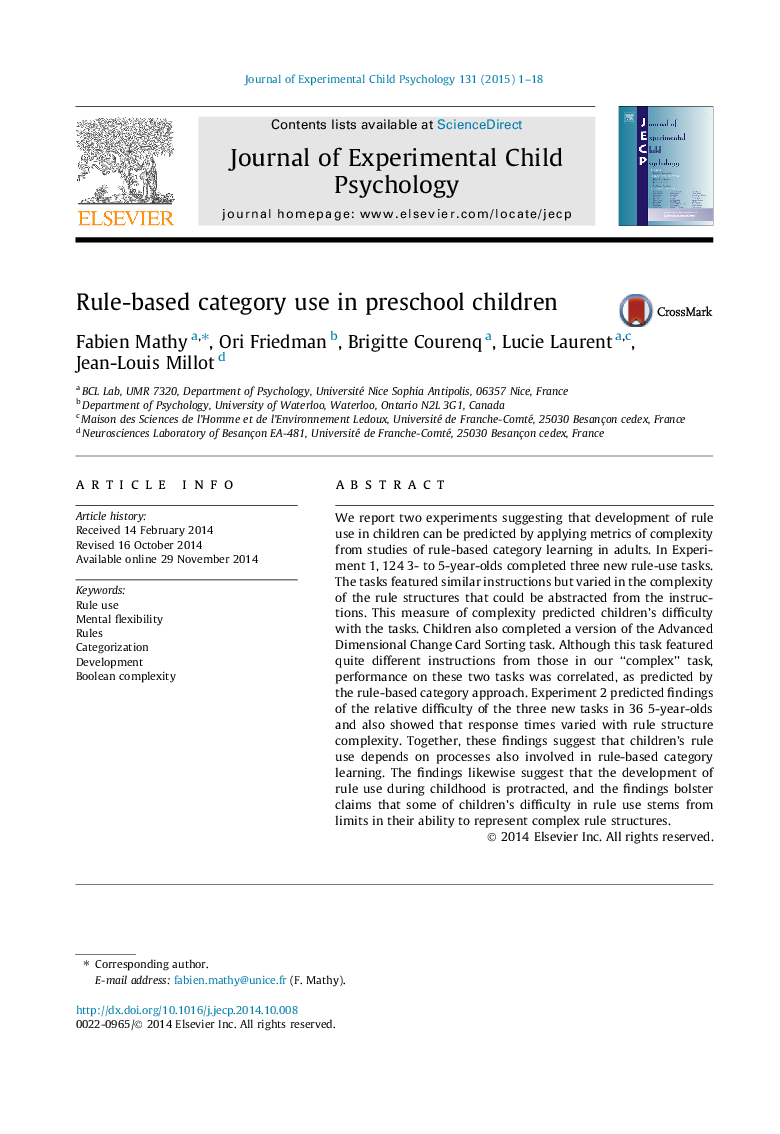| Article ID | Journal | Published Year | Pages | File Type |
|---|---|---|---|---|
| 918014 | Journal of Experimental Child Psychology | 2015 | 18 Pages |
•Rule use in children can be predicted by applying metrics of rule-based complexity.•This measure of complexity predicted children’s difficulty.•This measure of complexity correlated with the Dimensional Change Card Sorting Task.•Our findings suggest that the development of rule use in childhood is protracted.
We report two experiments suggesting that development of rule use in children can be predicted by applying metrics of complexity from studies of rule-based category learning in adults. In Experiment 1, 124 3- to 5-year-olds completed three new rule-use tasks. The tasks featured similar instructions but varied in the complexity of the rule structures that could be abstracted from the instructions. This measure of complexity predicted children’s difficulty with the tasks. Children also completed a version of the Advanced Dimensional Change Card Sorting task. Although this task featured quite different instructions from those in our “complex” task, performance on these two tasks was correlated, as predicted by the rule-based category approach. Experiment 2 predicted findings of the relative difficulty of the three new tasks in 36 5-year-olds and also showed that response times varied with rule structure complexity. Together, these findings suggest that children’s rule use depends on processes also involved in rule-based category learning. The findings likewise suggest that the development of rule use during childhood is protracted, and the findings bolster claims that some of children’s difficulty in rule use stems from limits in their ability to represent complex rule structures.
